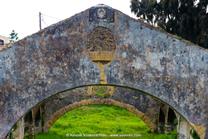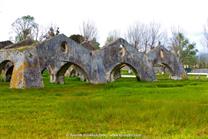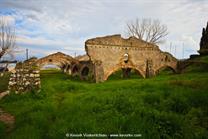





© 2016 All CopyRights Reserved
All content is copyrighted, no part my be copied, or used, for any reason, without the prior written agreement.
Any and all copyright violation will be legally prosecuted.
Getting There
The ruins are at the end of Gouvia Marina. From the main road of Gouvia village look for the sign that points to a narrow road.
The ruins are at the end of Gouvia Marina. From the main road of Gouvia village look for the sign that points to a narrow road.
View In Corfu - Historical Points of Interest in a larger map

The large bay of Gouvia forms a natural harbour which houses todays marina but in the in the 17th century Venetian seamen selected the area of Gouvia as an ideal location for creating a naval base. They fortified the entrance of the harbour with a small fort commonly known as Scarpa, parts of which still remain until today, but in private property.
Corfu, being in a strategically position between Greece and Italy was and still is the first port when making this crossing, so the shipyard which still stand to date was built in 1716 to support the galleys which were passing from Corfu. It is remarkable how good the Venetians were in such constructions since the main structure of the building is essentially intact, only the roof has been destroyed.
Corfu, being in a strategically position between Greece and Italy was and still is the first port when making this crossing, so the shipyard which still stand to date was built in 1716 to support the galleys which were passing from Corfu. It is remarkable how good the Venetians were in such constructions since the main structure of the building is essentially intact, only the roof has been destroyed.
































































